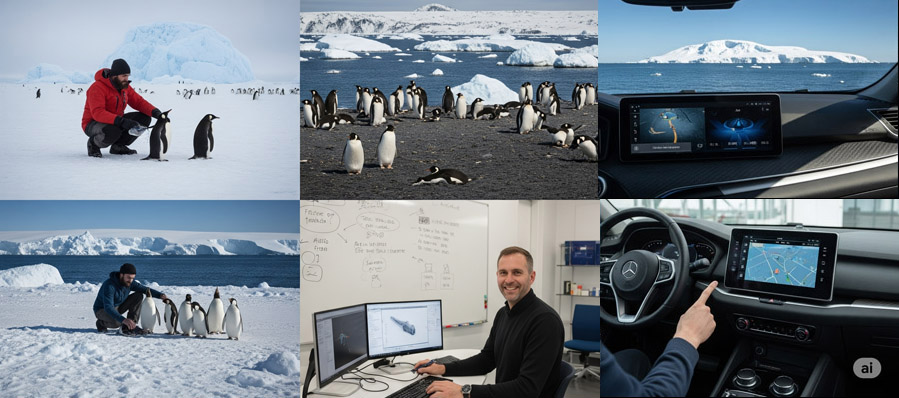In the relentless, icy expanse of Antarctica, where blizzards can erase horizons and the landscape shifts with the seasons, one creature navigates with astonishing precision: the penguin. These seemingly simple birds, waddling on land and torpedoing through frigid waters, hold a masterclass in survival and orientation. For us at Aristway, their innate abilities offer profound insights into the power of biomimicry – the art and science of innovating by emulating nature's time-tested designs and strategies.
Nature's Blueprint for Navigation
Biomimicry isn't just about copying shapes; it's about understanding the underlying principles that make natural systems so effective. When we look at the penguin's journey across vast, featureless ice fields or through turbulent underwater currents, we're not just seeing an animal moving; we're witnessing a sophisticated, instinct-driven navigation system in action.
Penguins rely on a remarkable combination of sensory inputs and ingrained behaviors:
- Solar and Celestial Cues: Even in the often-overcast Antarctic, penguins possess an internal compass, likely utilizing the sun's position (even when obscured) and potentially celestial patterns for long-distance orientation.
- Geomagnetic Sensitivity: Research suggests some birds can detect the Earth's magnetic field, providing another layer of navigational data, especially when visual cues are scarce.
- Olfactory Maps: While less obvious in the open ice, the sense of smell can play a role in locating specific breeding colonies or foraging grounds.
- Collective Intelligence: When moving in groups, penguins exhibit collective navigation. They follow leaders, adjust based on the movement of others, and effectively share environmental information, even if unconsciously. This "swarm intelligence" allows them to find optimal paths and conserve energy.
- Memory and Experience: Over repeated journeys, penguins build mental maps of their environment, remembering landmarks (even subtle ones like ice formations or wind patterns) and successful routes.
From Penguin Instincts to Vehicle Intelligence
So, how can the waddle of a penguin inspire the future of vehicle navigation? The parallels, when viewed through a biomimetic lens, are striking:
- Robust Autonomous Systems for Extreme Environments: Imagine autonomous vehicles designed to operate in blizzards, dense fog, or even underwater. Just as penguins navigate featureless ice, future vehicles could integrate multi-modal sensors (like advanced radar, lidar, and even magnetic field detectors) that mimic the penguin's diverse sensory toolkit, allowing them to "see" and orient themselves when traditional GPS or visual systems fail.
- Instinctive Algorithmic Decision-Making: Penguin navigation isn't about complex calculations; it's about rapid, instinctual responses to environmental cues. This can inspire algorithms for autonomous vehicles that prioritize real-time adaptation over rigid pre-programmed routes, allowing for more fluid and resilient navigation in unpredictable conditions. Think of a vehicle that "instinctively" finds the safest path through a dynamic, obstacle-filled environment, much like a penguin instinctively avoids ice cracks or finds open water.
- Swarm Navigation and Collective Efficiency: The way penguins move in groups to find food or reach breeding grounds offers a blueprint for drone swarms, autonomous convoys, or even future delivery networks. By sharing data and adjusting behavior based on the collective, these systems could achieve greater efficiency, safety, and resilience than individual units operating in isolation. A lead drone could "sense" optimal wind currents, and the others would follow, adapting their flight paths in real-time.
- Energy-Efficient Movement: The penguin's streamlined body and powerful flippers are optimized for efficient movement through water. This biomechanical efficiency can inspire designs for underwater drones or even land vehicles that minimize drag and maximize propulsion, reducing energy consumption.
At Aristway, we believe that nature has already solved many of the complex challenges we face in technology. By meticulously studying the "blueprints" of Antarctica's greatest navigators – the humble penguin – we can unlock revolutionary approaches to vehicle intelligence, creating systems that are not only smarter but also inherently more resilient, adaptable, and efficient, just like the natural world that inspires us.
The future of navigation isn't just about more powerful computers; it's about understanding the elegance of natural instinct and applying it to the machines we build.

